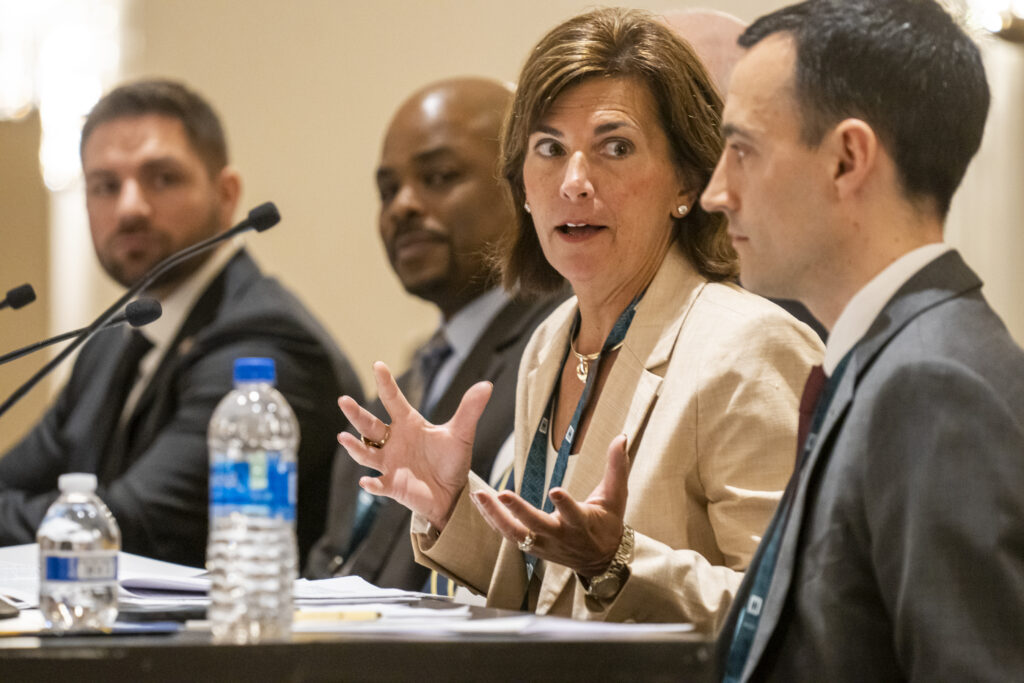
NATIONAL HARBOR, Md. — The COVID pandemic has spiked consumer interest in supply chain issues. But for the Department of Defense, supply chain problems have existed for decades, said panelists during the Supply Chain Risk Roundtable held April 5 at Sea-Air-Space.
Chris Espenshade, director of small business for Naval Supply Systems Command, kicked off the roundtable discussion with an examination of the issues affecting global supply-chain resiliency. Everything from big data analytics to port closures and border delays impact the supply chain, he said. Specifically, lack of depth and competition among suppliers is hampering cost and quality.
“For example, today, 90% of our missiles come from only three sources,” Espenshade said.
Shortages in energy, labor and raw materials are key drivers of supply-chain disruption. In particular, Espenshade said, environmental issues, climate change and natural disasters, global health and pandemic response, social unrest, trade and tariff policies, and political unrest and terrorism have resulted in increased cost and price inflation.
As a result of President Biden’s February Executive Order 14017 on America’s Supply Chains, the Department of Defense is actively building a deeper understanding of its supply chains and industrial base capabilities, with a holistic approach to resilience, Espenshade said.
But there are two key issues, said Kurt Wendelken, vice commander for NAVSUP.
“There are a limited number of suppliers, and we’re fighting obsolescence on a daily basis,” he said. “Both of these need to inform how we think about procurement and if cost is the right solution.”
Both Wendelken and Karen Fenstermacher, executive for strategic initiatives for NAVSUP, emphasized the “one Navy” concept when communicating with suppliers.
“The Navy is really 19 navies. We have very well-carved stovepipes in the Navy. But we want to have a single Navy voice to industry on the key challenges we’re facing and our strategies to work together,” Fenstermacher said.
This includes creating a conversation during the acquisition process about how the Department of Defense is going to sustain the systems it’s purchasing. “The acquisition policy is tremendously complex and voluminous,” Fenstermacher said. “One thing that’s exciting is the low-cost framework we’ve established.”
From an industry standpoint, supply chain has traditionally been thought of as a back-office function, but now has come to the forefront. “I see that both as a challenge and a great opportunity,” said Clark Dumont, senior director of global procurement for BAE Systems.
Panelists also emphasized the importance of including small businesses in the supply chain.
“We’re open for business; the money is there,” said Jimmy Smith, director of the Department of the Navy Office of Small Business Programs. He noted that last year, the Department of Defense spent $17.1 billion on small-business programs.
In particular, Smith mentioned the DoD’s Mentor-Protégé Program, a partnership between large and small manufacturing businesses.
“The government will give a large partner up to $3 million to help a small business partner, but in many cases I can’t find partners from industry to do this,” Smith said. “I encourage you to step forward and take this opportunity.”
- Combatting Climate Change - April 5, 2023
- CMS Panelists Envision Future American Sea Power - April 5, 2023
- U.S. Navy Embraces Diversity Initiatives - April 5, 2023




